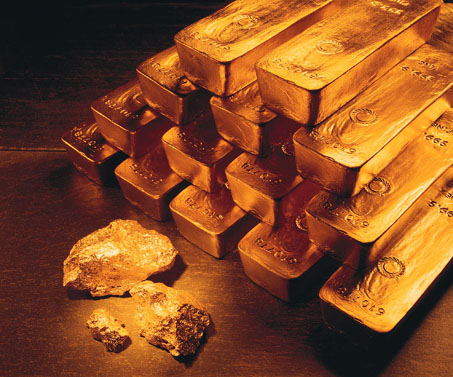Commodities & Metals
After the World Gold Council Outlook, a Reconsideration of Gold (and Silver)
Published:
The World Gold Council has issued its new report for 2013 and reviewing 2012 on gold, and it offers some great and perhaps stunning insight if you read through the reports and consider some of the implications through time.
You have to understand that the World Gold Council is, of course, “pro-gold” as you read through it. That being said, our take is that gold’s peak may remain elusive but is now closer rather than more distant. The gold bugs will not like this viewpoint. Just do not consider this as the town crier calling the death of gold (and silver too).
The council talks about gold’s currency-hedging perspective, its diversification qualities, its stance as a risk in tail-risk (or Black Swan) events, and even how foreign central bank diversification plays a role in gold. If you invest in the SPDR Gold Shares (NYSEMKT: GLD) and the lower-fee ETF via the ETFS Physical Swiss Gold Shares (NYSEMKT: SGOL), you better read through the report.
Gold mining investors who own the Market Vectors Gold Miners ETF (NYSEMKT: GDX) will want to pay attention. Even those who invest in silver via the iShares Silver Trust (NYSEMKT: SLV) better play attention here, because the metal known also as the Devil’s Metal is in many cases nothing more than the leveraged and speculative trade on gold. Many traders and investors think of silver as the dumb-money or poor-man’s bet on the gold market.
Gold had a weak fourth quarter, but it still rose by about 8% in dollar terms in 2012. Why are we getting somewhat cautious or leery even if the Gold Council is still optimistic? Gold has risen for 12 consecutive years now. This is no dot-com bubble. What was an asset-class trade ahead of the world recession became the ultimate flight to safety. Now it is a hedge against all global currencies as they race to devalue paper assets. Is buying the renminbi or yuan safe? What happens when the Federal Reserve and Treasury efforts include $85 billion of bond purchases per month when the U.S. deficit is out of control? Gold is a hedge against the Johann Gutenberg efforts of world central banks.
Another issue that gold investors need to consider is that the Gold Council also talks up how gold has seen low volatility despite the end-of-year price drop. Just go look a the key ETFs we talked about above. The trading volumes are generally lower. Does this mean that gold peaked? Maybe. It could just mean that gold is trying to set a new base level from which it can rally.
The good news by our take is that the World Gold Council does at least address the implied risks. A normalized Fed policy without a future low-rate (or no-rate) policy, weak or fragile growth, new Bank of Japan efforts and more. The overall tone from the Council remains bullish, but we would only expect that stance, even in a neutral scenario. The recent rise in interest rates may continue if the woes of Europe keep tempering and if the U.S. recovery is not entirely derailed by Washington D.C. That rise in rates has yet to ever fully take shape, but rising rates that come close to offering above-inflation rates would ultimately start to compete for investment dollars against gold.
Gold is still an asset class that needs to be owned by almost every sort of smart-money investor. Silver might as well be thrown in there too. The question boils down to how much and how aggressive buyers should be when the price pulls back and when it rises. Gold is an ultimate hedge. That being said, the outlook for 2013 is very detailed and remains bullish, but it seems that the council’s outlook after 12 consecutive years of gains in gold may be signaling what the gold bugs do not want to hear.
Is gold dead? Not by our take. Will gold enjoy another 12 consecutive years of higher and higher prices? Not even if it should rise through time.
Here is the World Gold Council’s full investment commentary.
Let’s face it: If your money is just sitting in a checking account, you’re losing value every single day. With most checking accounts offering little to no interest, the cash you worked so hard to save is gradually being eroded by inflation.
However, by moving that money into a high-yield savings account, you can put your cash to work, growing steadily with little to no effort on your part. In just a few clicks, you can set up a high-yield savings account and start earning interest immediately.
There are plenty of reputable banks and online platforms that offer competitive rates, and many of them come with zero fees and no minimum balance requirements. Click here to see if you’re earning the best possible rate on your money!
Thank you for reading! Have some feedback for us?
Contact the 24/7 Wall St. editorial team.